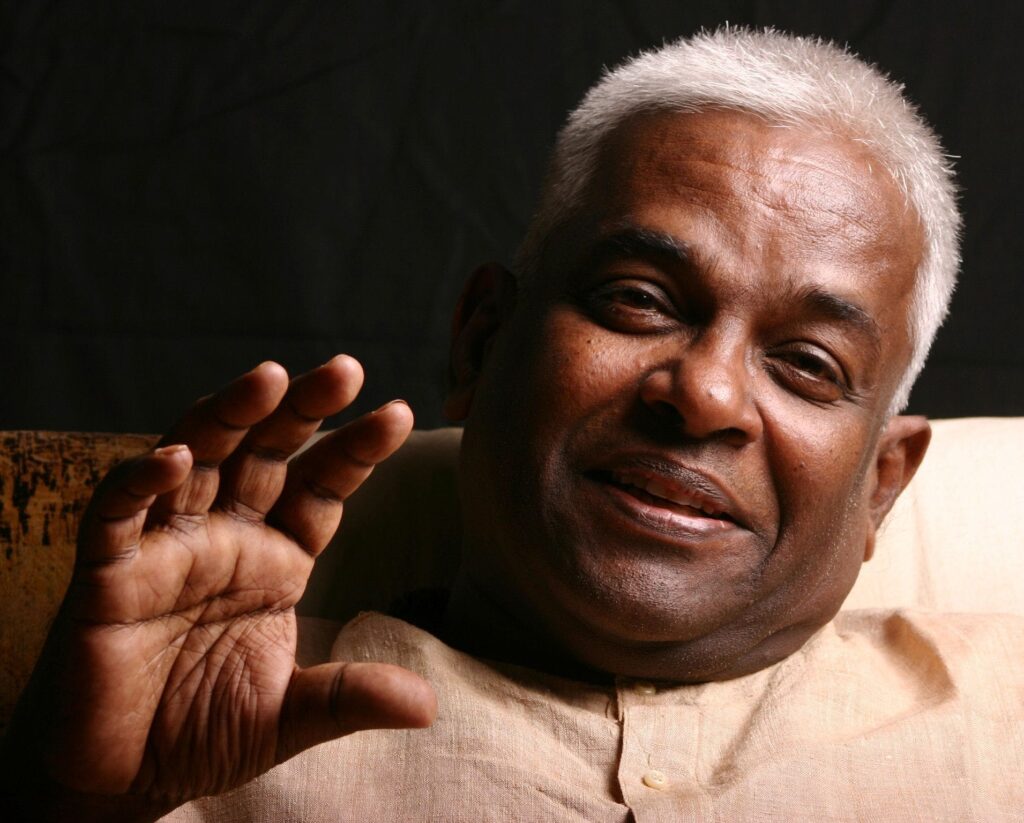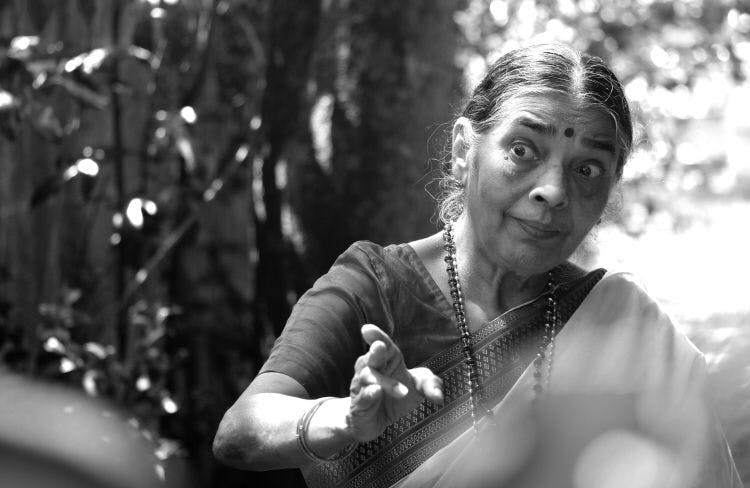Nirmala Panicker describes the routes she traveled to research Mohiniyattam.
In the past few articles, we saw how various teachers and their students contributed to defining Mohiniyattam and its various versions. We learnt about the growth of Mohiniyattam with the establishment of kalaris and how the cultural exchange programmes across South India led to Mohiniyattam taking different forms rooted in local ethos.
We also discussed the growth of the dance form in Kalamandalam and the efforts put in by Vallathol Narayana Menon to find a teacher and then a student to learn Mohiniyattam; how Mohiniyattam was nurtured under careful tutelage of Kalyanikuttiyamma and later Chinnammuamma.
In this piece, we will discuss the establishment of Natanakairali in Irinjalakuda in Kerala, and its efforts to keep the traditional art forms alive; and my how my research into Mohiniyattam helped expand my horizons.

Natanakairali was started in 1975 by G. Venu, an exponent and maestro of Kutiyattam (or Koodiyattam), with the aim to save the traditional art forms of Kerala from extinction and inspire and encourage artists to take forward their respective art forms. Kakkarissi Natakam, Tolpavakuttu, Pavakathakali, Kutiyattam, Nangiarkuttu, Mohiniyattam, Thiruvathirakalim Nokkuvidya, Ammanattam and many other art forms thus underwent a process of rejuvenation under the effulgence of Natanakairali.
Research in Mohiniyattam
My research about the occult origins of Mohiniyattam started around the same period. After my initial training in Mohiniyattam I took up a job as the head of the dance department at the Lawrence School, Lovedale in Ooty in 1974. Since I was employed in Tamil Nadu, my research in Mohiniyattam had slowed down, but my studies in the Sangam literature were making good progress. It opened my eyes into the prehistoric beginnings of music and dance in South India.
In 1979, I got married to Venu and that’s how Natanakairali in Irinjalakkuda became my base in Kerala. Things took a different dimension since my arrival at Natanakairali. The scope of my research became broader as we incorporated women-led traditional art forms such as Nangiarkuttu, Tiruvatirakkali and this section of the centre was named Natanakaisiki.
When I decided to write a book on Mohiniyattam, I visited Kalamandalam. This gave me an opportunity to learn almost all the dance items that were being taught in Kalamandalam at that time. And to my immense gratitude, Sathyabhama teacher acquainted me with more than 20 atavus, the basic pure dance techniques that she had written and kept with her). Kalamandalam Padmini was another guru who taught me at Kalamandalam.

Learning under the legend
It is my great fortune to have Kalamandalam Kalyanikuttiyamma as my first Guru. I have mainly learned, taught and performed Mohiniyattam in her style. Later, when I learnt the Kalamandalam style, my performance became a blend of these two styles; incorporating the movements and gestures of both the styles.

Later Venu and I compiled the information we gleaned and published a book titled ‘Mohiniyattam Attaprakaram’ in 1983. The book, published in Malayalam and English, has notations on mudras and postures. In fact, Venu also did the illustrations of the notations of the mudras for the book.
My next step was to formulate a tradition for teaching the mudras. Whether in the ‘Kalamandalam style’ or in the ‘Kalyanikuttiyamma style’ we were taught that the mudras of Mohiniyattam were based on the Hastalaksanadipika. Slokas or verses that contain the names of the 24 mudras and their postures were the only items taught in those days.
The shastra to teach Mudras is based in the following verse:
Yatō hasta statō dṛṣti:
Yatō dṛṣti statō mana:
Yatō mana statō bhāva:
Yatō bhāva statō rasa:
The eyes follow the hands, the mind follows the eyes, the bhāva follows the mind and rasa follows the bhāva. The first lesson is to teach the coordinated application of eyes and hands. By 1994, I learnt the mudras of Hastalaksanadipika and their usage. This helped me formulate a system to train the students at Natanakairali. With our consistent efforts and perseverance, we are now able to teach this system of learning Mohiniyattam at Natanakaisiki.
Later in July 2005, I talked about this method of practice during a lecture-demonstration in one of the seminars conducted by Kalamandalam. A few in the audience raised doubts about the relevance of a systematized style of performance. Still, many believed that this kind of training will help in the formulation of a strong basic structure for Mohiniyattam. Overall, it has given me immense pleasure that this system is followed today in almost all the Mohiniyattam training centres.
Going back to the journey of discovering various aspects of Mohiniyattam, I also started focusing my attention on acting in Mohiniyattam. In 2007, we published a new illustrated work titled Hand Gestures of Hasthalakshanadeepika in Mohiniyattam, which incorporated the systematized mudras, their usage, the postures and the movements. The feeling that I could contribute material related to the hand gestures of Mohiniyattam gave me a great sense of fulfillment.
Acting in Mohiniyattam
People who witnessed the performance of O Kalyaniyamma , the first Mohiniyattam Guru at Kerala Kalamandalam, were greatly impressed by her facial expressions (Sookshmabhinaya) and very often referred to it while discussing acting in Mohiniyattam.

Ananda Shivaram, a student of Kathakali at that time, who once visited Natanakairali to attend a seminar, remarked about the acting of Kalyaniyamma: “We, the students of Kathakaḷi at Kalamandalam always believed that Kathakaḷi was the ultimate word in acting. ‘After all, what is there to see in Mohiniyattam’ – that was our attitude towards it until we saw the performance of Kalyaniyamma. Her compelling performance, dancing and singing at the same time, overwhelmed many of us. And it changed our attitude towards Mohiniyattam.”
Once during his visit to Kerala Kalamandalam, the great poet Rabindranath Tagore happened to see the Mohiniyattam performance of Kalyaniyamma. He invited Kalyaniyamma to Santiniketan and she taught there for some time. Kalyaniyamma had many opportunities to perform in Bombay and her performance, especially the facial expressions, were greatly appreciated by the connoisseurs of great art. Contemplating on these lines, my enquiry took a different turn (modes) towards the potential of acting in Mohiniyattam. Basically, Mohiniyattam is a dance form that manifests the emotions and thoughts of the mind.

Truth be told, I wanted to bring back the acting tradition to the dance art form as it was a prominent feature of the performances by South Indian dancers, including those of the Cēra kingdom in the bygone eras. In the Tamil epic, ‘Cilappatikaram’, references could be found about the acting techniques of the ‘viralis’ or the female musicians and dancers of the Sangam age. These dancers revealed the innermost thoughts of mind through appropriate body gestures.
(Assisted by Sreekanth Janardhanan)
Click here for more on the series
Featured in this article:
What is Cilappatikaram?
It is a Tamil epic attributed to the Jain prince Ilanko Atikal believed to have been composed in the 5-6th Century BCE. A set of three books, Cilappatikaram is set in the capitals of the three Tamil kingdoms—Pukar (the Chola capital), Maturai (Madurai, the Pantiya or Pandya capital), and Vanchi (the Chera capital).
Alternative names: Chilappatikaram, also spelled Shilappadikaram
Meaning: Tale of an Anklet
Write to us at [email protected]




